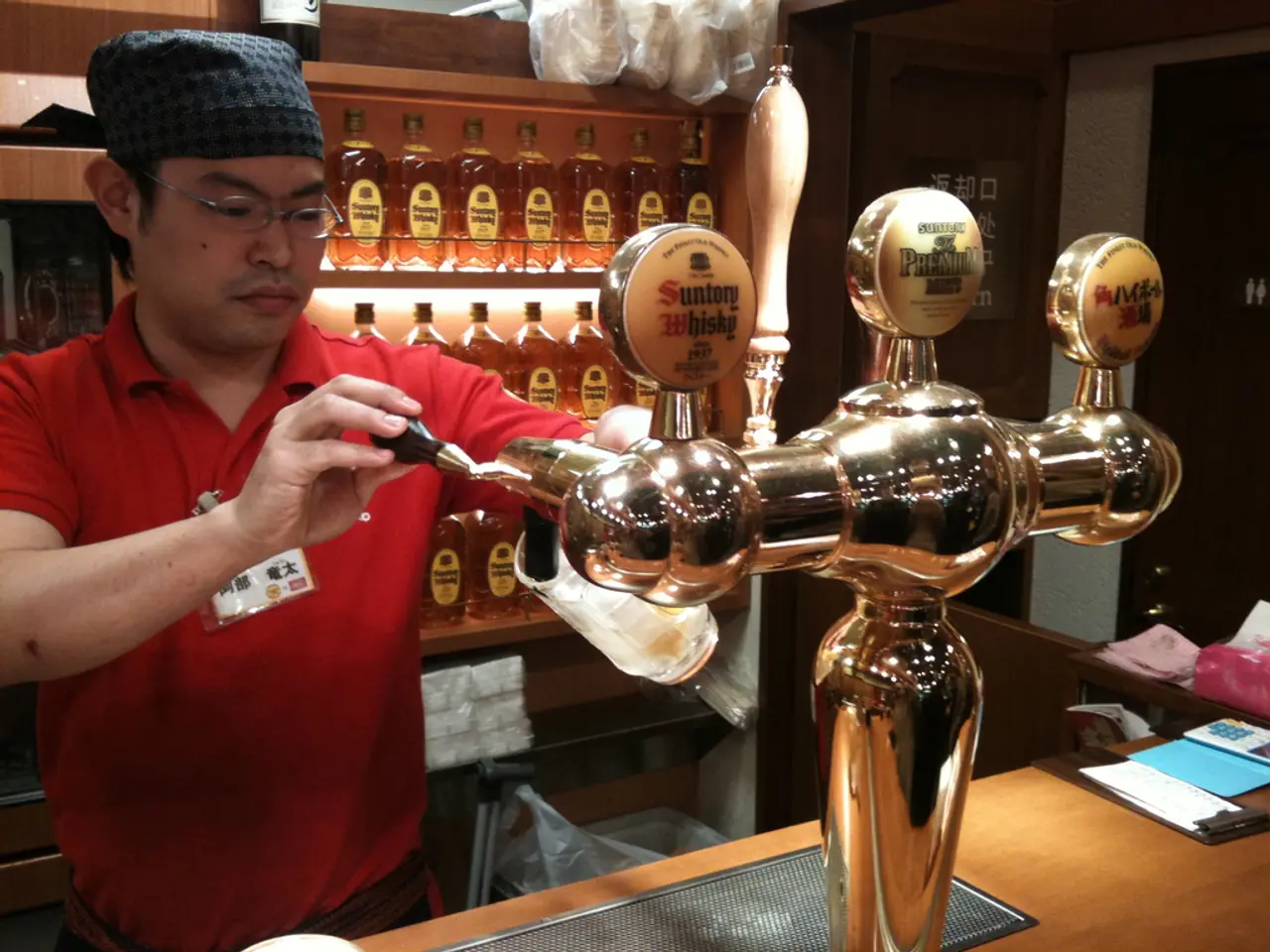Craving for alcohol: Understanding, controlling, and additional insights
Managing Alcohol Cravings: A Comprehensive Guide
Alcohol cravings can be a challenging hurdle for those seeking to overcome addiction. These cravings are primarily caused by changes in brain chemistry due to repeated alcohol use, leading to chemical dependence and psychological triggers.
The Role of Dopamine
Alcohol can send dopamine signals to the nucleus accumbens, often referred to as the pleasure center. Over time, the brain adapts by reducing its natural production of these chemicals, leading to decreased pleasure and increased anxiety or discomfort when not drinking. This creates a craving to consume alcohol again to relieve these negative feelings and re-experience the reward.
External and Internal Triggers
Cravings are triggered by both internal states (like stress or negative emotions) and external cues (such as being in environments associated with drinking). Psychological factors such as using alcohol to cope with mental health issues also reinforce cravings and addiction.
Managing Alcohol Cravings
Short-term strategies:
In the moment, distraction can be a useful tool to help manage alcohol cravings. Activities that can serve as distractions include watching videos online, exercising, listening to music, taking a shower, meditating, doing a favorite hobby, and reaching out to a friend or family member. Practicing relaxation techniques like deep breathing or mindfulness can also help reduce anxiety. Avoiding triggers such as places, people, or situations linked to drinking can provide a temporary respite from cravings. Seeking immediate support from friends, family, or support groups can also be beneficial.
Long-term strategies:
For sustained recovery, a more comprehensive approach is necessary. Engaging in professional treatment such as counseling or behavioral therapies can help address underlying psychological factors and develop coping skills. Medications prescribed by a doctor can reduce cravings and withdrawal symptoms. Building a strong social support system to promote sober living is also crucial. Addressing co-occurring mental health conditions like depression or anxiety is essential. Developing healthy lifestyle habits including regular exercise, a nutritious diet, and stress management can also help manage alcohol cravings.
Understanding Triggers
Understanding triggers can help a person predict and prepare for alcohol cravings. A person can make a list of triggers, dividing them into categories such as triggers that happen to them, activities they participate in, and strategies to calm themselves. Identifying the cue, routine, and reward in the habit loop can help a person break the cycle and manage alcohol cravings. Removing oneself from a situation that is triggering a craving can also help manage alcohol cravings.
The Power of Mindfulness
Practicing mindfulness and relaxation techniques can help a person stay present and reduce alcohol cravings. A person may use deep breathing exercises, relaxation exercises, yoga, or stretching to manage alcohol cravings.
The Road to Recovery
Sustained recovery involves breaking the neurochemical and psychological cycles underlying addiction through a combination of therapy, medical support, and lifestyle changes. Relapse prevention includes recognizing triggers early and applying learned coping strategies consistently.
[1] National Institute on Alcohol Abuse and Alcoholism. (2019). Alcohol Use Disorder: A Comparative Study of Medications. Retrieved from https://www.niaaa.nih.gov/publications/brochures-and-fact-sheets/medications-treatments
[2] National Institute on Drug Abuse. (2018). Understanding Drug Use and Addiction: What Science Says. Retrieved from https://www.drugabuse.gov/publications/research-reports/understanding-drug-use-addiction
[3] National Institute on Alcohol Abuse and Alcoholism. (2020). Alcohol Use Disorder: Diagnosis, Prevention, and Treatment. Retrieved from https://www.niaaa.nih.gov/publications/brochures-and-fact-sheets/alcohol-use-disorder-diagnosis-prevention-treatment
[4] National Institute on Alcohol Abuse and Alcoholism. (2019). Alcohol and the Brain. Retrieved from https://www.niaaa.nih.gov/publications/brochures-and-fact-sheets/alcohol-brain
[5] National Institute on Drug Abuse. (2018). Principles of Effective Treatment. Retrieved from https://www.drugabuse.gov/publications/principles-drug-addiction-treatment-research-based-approach/principles-effective-treatment
- The brain adapts to alcohol use by reducing its natural production of dopamine, which can lead to decreased pleasure and increased anxiety or discomfort when not drinking, subsequently causing alcohol cravings.
- Short-term strategies for managing alcohol cravings include distraction through activities like watching videos, exercising, meditating, or reaching out to a friend, as well as practicing relaxation techniques and avoiding triggers.
- Long-term strategies for recovery involve engaging in professional treatment such as counseling or behavioral therapies, using medications prescribed by a doctor, building a strong social support system, addressing co-occurring mental health conditions, and adopting healthy lifestyle habits.
- Understanding triggers and practicing mindfulness and relaxation techniques can help a person stay present and reduce alcohol cravings, with mindfulness aiding in breaking the cycle leading to addiction.




